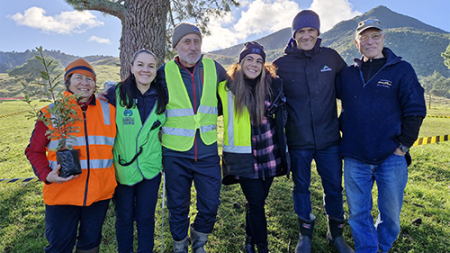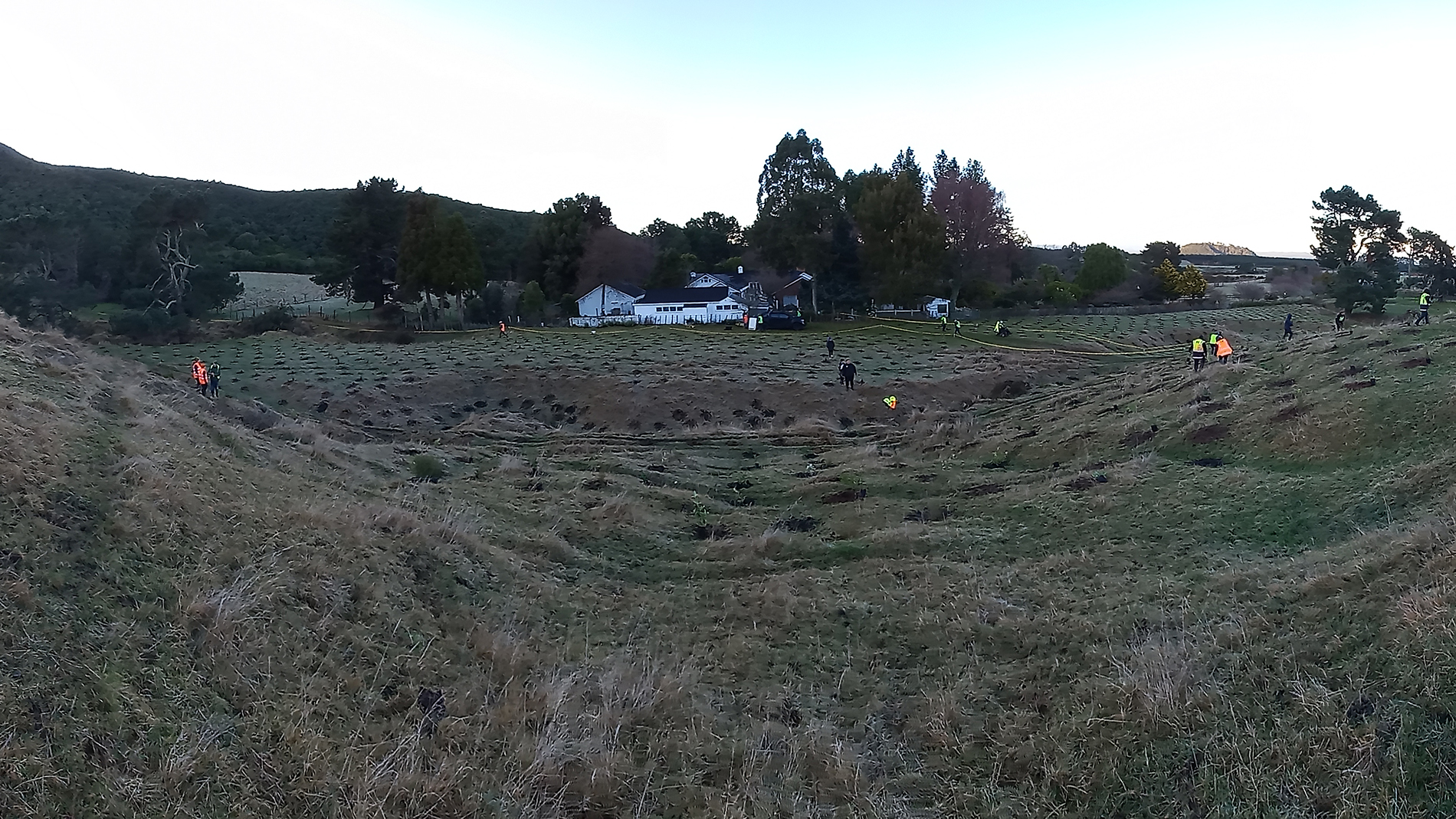
The launch of the Tauhara Ngahau restoration project brought many people together, including (from left) Nicki Hughes (WRC), Rachel Thompson (Kids Greening Taupō), Jan Hania (Governance Project Sponsor), Te Aue Addison-Valaau (Project Lead), Vernon Rameka (Opepe Farm Trust General Manager) and Herwi Scheltus.
The launch of the Tauhara Ngahau restoration project as part of Matariki celebrations wasn’t just momentous for getting 7500 native stems in the ground.
The "most beautiful part", says project lead Te Aue Addison, was how two events brought so many people together, and how the 10-year restoration project is strengthening relationships – some which may have been a bit tense in the past.
When you’re looking at a restoration project that spans multiple landowners and interests, and which will take place over a very long time, you’ve got to have strong relationships before you can even begin to do any groundwork," says Te Aue.
"What really stuck out for me on the day was all the different people that came together – various organisations, volunteers, local families, schools and community groups."
"It was something that everyone could see themselves in … and there’s nothing like getting out on the whenua to reconnect with it. Seeing manu fly overhead, the mist on top of the maunga, getting your hands in the earth; the act of practising restoration helps you to feel a deeper connection to what you want to protect."
The 10-year Tauhara Ngahau restoration project, being led by the Tauhara Collective, aims to regenerate at least 60 hectares of whenua surrounding Tauhara to extend its korowai/native cloak and help link biodiversity corridors across Taupō.
The collective has representatives from five Māori land trusts, which together manage about 8000 hectares on behalf of a shared beneficiary base of over 10,000 people. Currently, the whenua has varying land use, including farming and forestry.
"Over time, we want to continue seeing regenerative practices influence future land use change to ensure we are leaving a green footprint for generations to come," says Te Aue.
"The Tauhara Collective recognised the need to walk the talk on our own kaitiaki responsibilities and to face the challenges of climate change. In practice, when it comes to the whenua we have been entrusted to manage, this means making decisions today that prioritise environment and people before profit.

Jacob Dexter and Belinda van Duivenboden from Waikato Regional Council helped with planting.
"We have a 500-year vision to restore, reconnect and regenerate the wellbeing of the maunga and surrounding whenua.
"The timespan acknowledges working with nature: if we plant totara today, we won’t see a healthy totara ngahere for 500 years. It also recognises the priorities of each generation, as that will change over time. So, we are starting the pathway for others to walk and shaping the direction."
Tauhara Ngahau is the first project to shape that direction, and Te Aue says there is a total of about 300 hectares that could be transitioned to mixed forestry and regenerative land uses over time.
Waikato Regional Council recognises Tauhara Maunga and Ngawa (the geothermal area) as a priority biodiversity site and has been working with the Tauhara Collective on erosion control and pest management planning. The council, with Trees for Survival and Love Taupō, helped fund the Matariki plantings.
"We’re working out how can we make the maunga a place that people can have a greater connection to, and this includes providing greater access and enhancing visitor safety while also preserving the biodiversity values.
"For many of the kids who came to help us plant and who have whakapapa connections to Tauhara Maunga, it was the first time we have been able to open the gate for them to be on the whenua and experience that connection."





To ask for help or report a problem, contact us
Tell us how we can improve the information on this page. (optional)